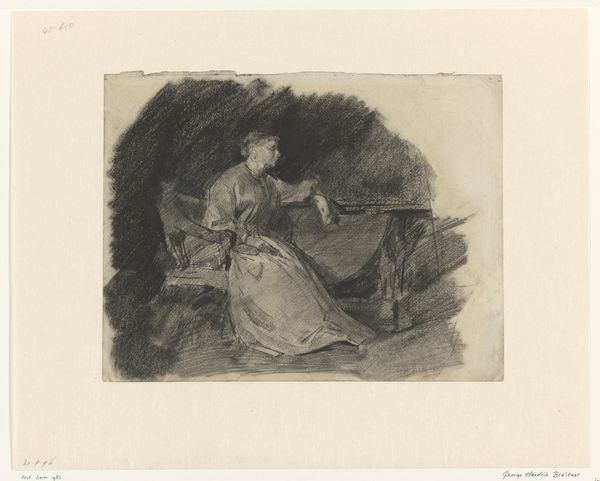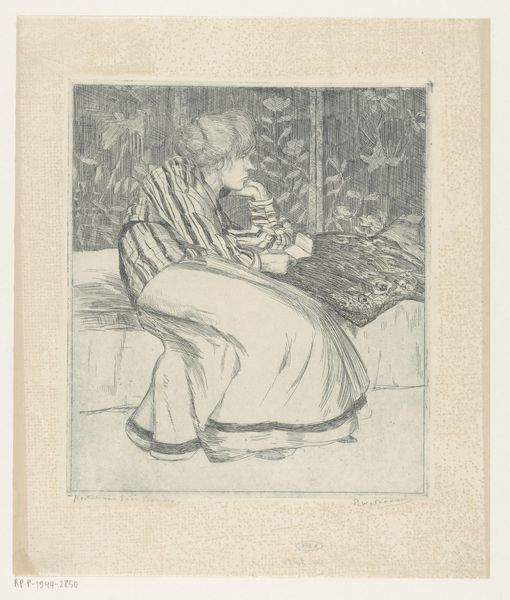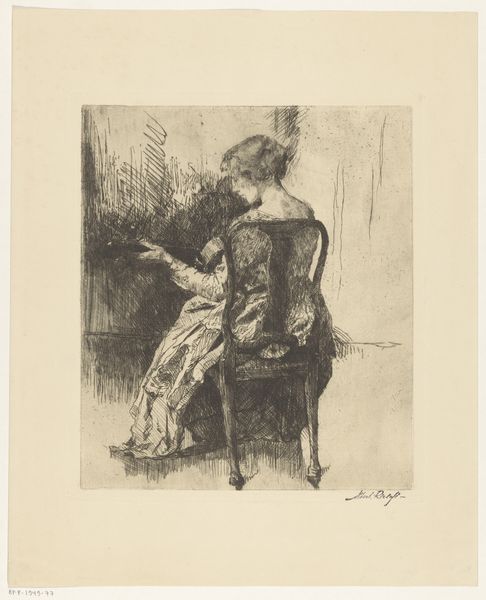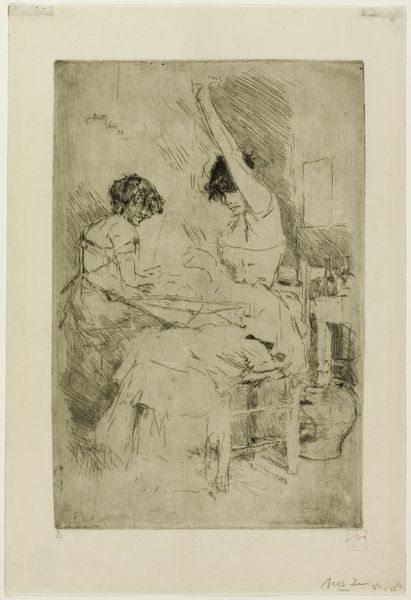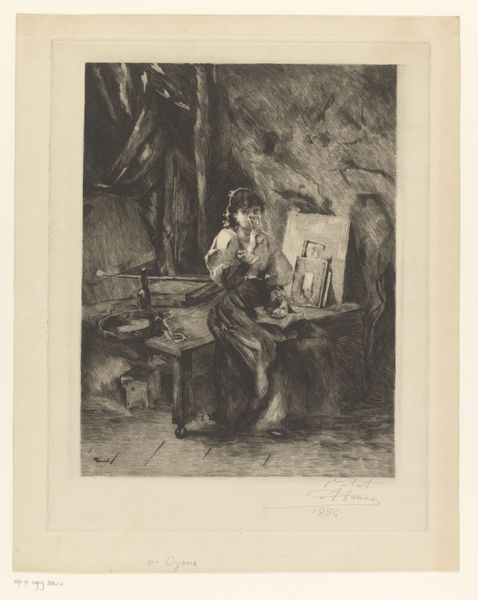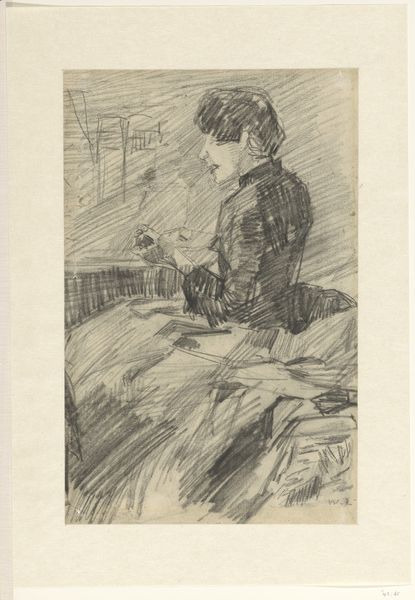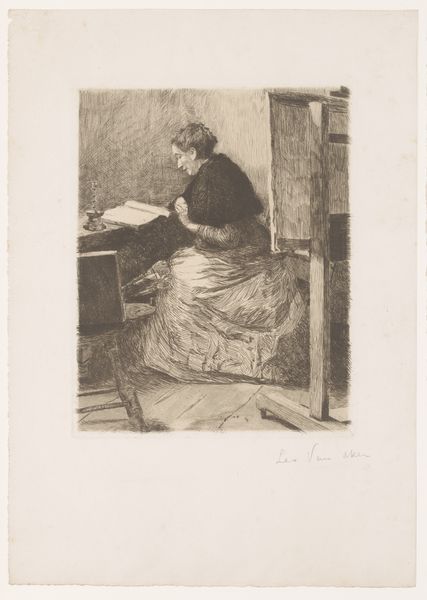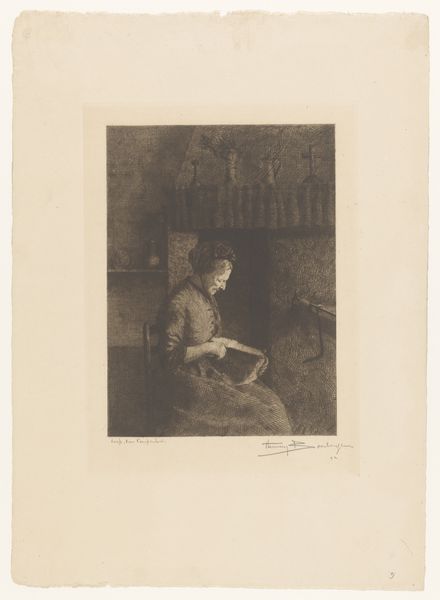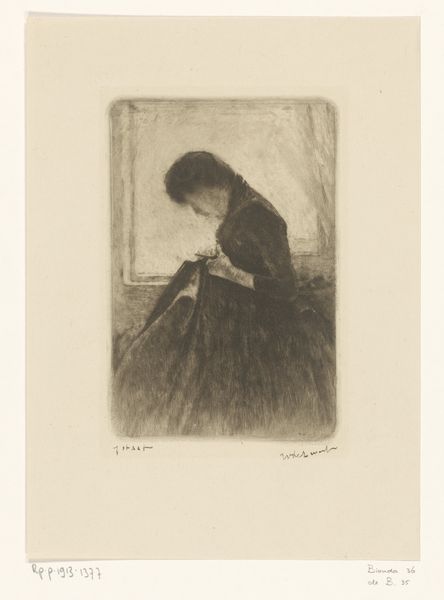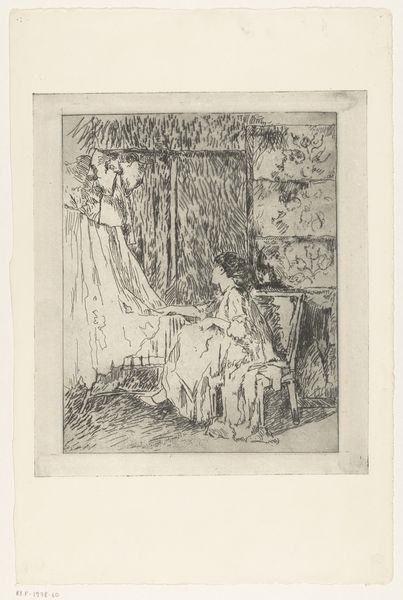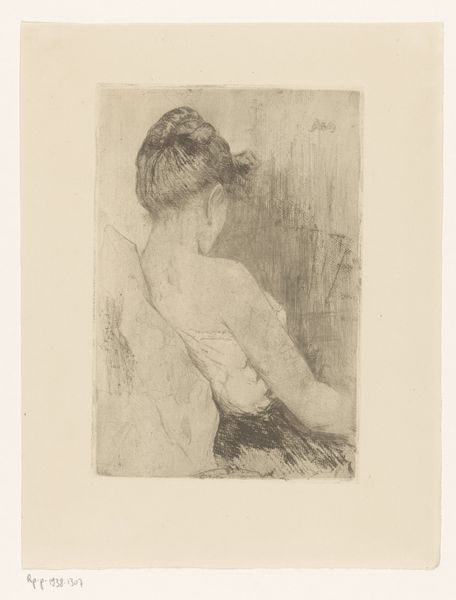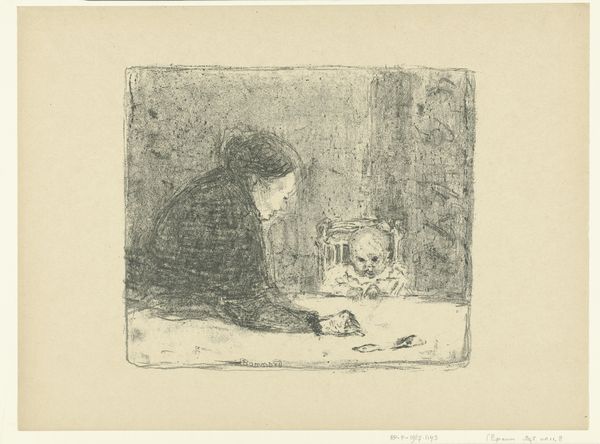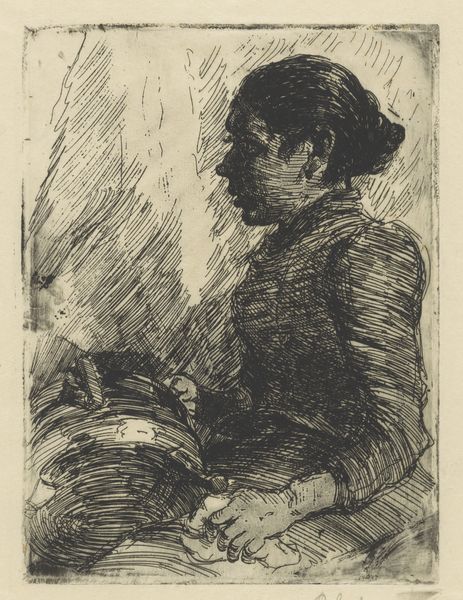
Dimensions: height 264 mm, width 234 mm
Copyright: Rijks Museum: Open Domain
Editor: This is "Vrouw die een kind in een wieg pap voert," or "Woman Feeding a Child in a Cradle," an etching by Albert Roelofs, created sometime between 1887 and 1920. It's quite small and intimate. I find the overall impression evokes such a sense of quiet domesticity, with the soft textures of the print lending it a timeless quality. What do you see in this piece? Curator: I see the universal symbol of motherhood rendered with a delicate touch, yes, but what resonates deeply are the layers of cultural memory embedded within. This scene is more than just a woman feeding a child; it’s an echo of countless Madonna and Child images throughout art history. Roelofs subtly evokes this connection through the tender pose and the intimate setting. Editor: That’s fascinating! I hadn't thought about the Madonna and Child imagery. How would the Impressionistic style contribute or detract from that connection? Curator: The impressionistic style softens the scene, making it less formal and more approachable, wouldn't you say? It invites the viewer to focus on the emotional connection rather than adhering to a strict, religious interpretation. This evokes our memory of how genre paintings created idealized projections and perceptions of motherhood during that period. The symbols remain potent, yet the delivery has shifted to mirror the changing societal values. Editor: So, Roelofs uses Impressionism to bridge the traditional Madonna image with the reality of everyday motherhood? Curator: Precisely! The very act of feeding – providing sustenance – becomes a powerful symbol itself. And the setting within the home amplifies this, grounding the sacred in the mundane. The act of 'mothering' persists as both biology and archetypal symbol across millennia. What did you notice when you first saw this image? Editor: I initially just saw a mother and child, but now I see that it's layered with so much cultural meaning. It really changes my understanding of how even simple domestic scenes can carry such weight. Curator: Indeed. Visual symbols can do this by activating subconscious elements across centuries and human experience. We both come away enriched when we identify that phenomenon.
Comments
No comments
Be the first to comment and join the conversation on the ultimate creative platform.
